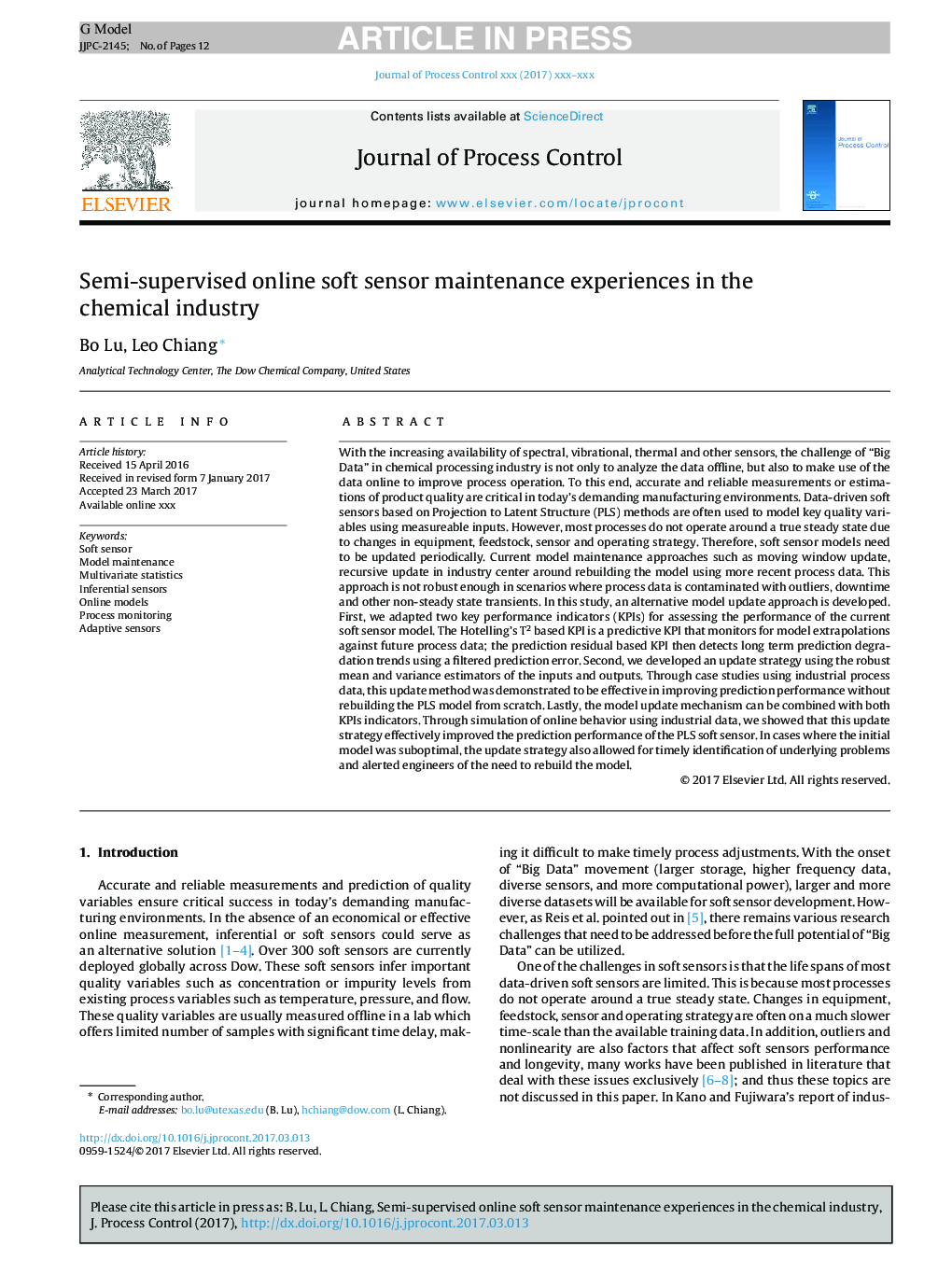| کد مقاله | کد نشریه | سال انتشار | مقاله انگلیسی | نسخه تمام متن |
|---|---|---|---|---|
| 7104187 | 1460336 | 2018 | 12 صفحه PDF | دانلود رایگان |
عنوان انگلیسی مقاله ISI
Semi-supervised online soft sensor maintenance experiences in the chemical industry
ترجمه فارسی عنوان
تکنیک های نگهداری سنسور نرم نیمه نظارت شده در صنایع شیمیایی
دانلود مقاله + سفارش ترجمه
دانلود مقاله ISI انگلیسی
رایگان برای ایرانیان
کلمات کلیدی
سنسور نرم نگهداری مدل، آمار چندمتغیره سنسورهای استنباطی مدل های آنلاین، نظارت بر فرآیند، سنسورهای سازگار،
موضوعات مرتبط
مهندسی و علوم پایه
مهندسی شیمی
تکنولوژی و شیمی فرآیندی
چکیده انگلیسی
With the increasing availability of spectral, vibrational, thermal and other sensors, the challenge of “Big Data” in chemical processing industry is not only to analyze the data offline, but also to make use of the data online to improve process operation. To this end, accurate and reliable measurements or estimations of product quality are critical in today's demanding manufacturing environments. Data-driven soft sensors based on Projection to Latent Structure (PLS) methods are often used to model key quality variables using measureable inputs. However, most processes do not operate around a true steady state due to changes in equipment, feedstock, sensor and operating strategy. Therefore, soft sensor models need to be updated periodically. Current model maintenance approaches such as moving window update, recursive update in industry center around rebuilding the model using more recent process data. This approach is not robust enough in scenarios where process data is contaminated with outliers, downtime and other non-steady state transients. In this study, an alternative model update approach is developed. First, we adapted two key performance indicators (KPIs) for assessing the performance of the current soft sensor model. The Hotelling's T2 based KPI is a predictive KPI that monitors for model extrapolations against future process data; the prediction residual based KPI then detects long term prediction degradation trends using a filtered prediction error. Second, we developed an update strategy using the robust mean and variance estimators of the inputs and outputs. Through case studies using industrial process data, this update method was demonstrated to be effective in improving prediction performance without rebuilding the PLS model from scratch. Lastly, the model update mechanism can be combined with both KPIs indicators. Through simulation of online behavior using industrial data, we showed that this update strategy effectively improved the prediction performance of the PLS soft sensor. In cases where the initial model was suboptimal, the update strategy also allowed for timely identification of underlying problems and alerted engineers of the need to rebuild the model.
ناشر
Database: Elsevier - ScienceDirect (ساینس دایرکت)
Journal: Journal of Process Control - Volume 67, July 2018, Pages 23-34
Journal: Journal of Process Control - Volume 67, July 2018, Pages 23-34
نویسندگان
Bo Lu, Leo Chiang,
